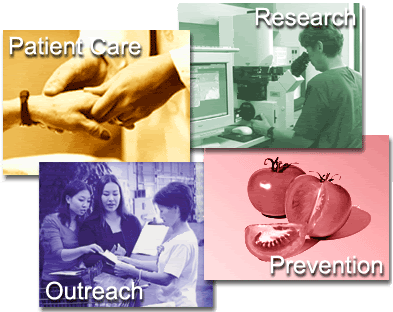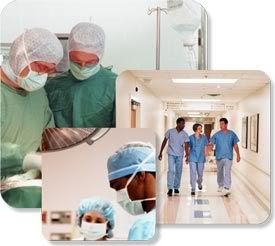Impact of patient age on family cancer history.
Individuals reporting an affected relative with certain cancers are at increased risk of developing cancers themselves. The actual risks associated with a positive family cancer history are highly dependent on both the number of affected relatives within a pedigree and the age at which an affected relative was diagnosed. Thus, individuals with a single affected relative with colorectal cancer diagnosed at the age of 70 years should be managed differently than individuals with multiple affected first-degree relatives, particularly if a relative was diagnosed before the age of 50 years. With numerous genetic tests available for identifying hereditary cancer predisposition syndromes, family cancer history information is becoming an increasingly important clinical tool for cancer risk assessment and management. To comply with most colorectal, breast, and prostate cancer-screening guidelines, providers need to collect pedigree information on patients aged 10 years or less than the age at which routine cancer screening begins for the general population.
A significant interaction between an individual’s age and his or her family history has been described for colorectal and breast cancer, but less so for prostate cancer. Younger patients with positive family histories tend to have greater age-adjusted relative risks of developing colorectal or breast cancer than older patients with positive family histories. The mechanism underlying this interaction between age and family history is unclear. One potential explanation might be that younger individuals with positive family histories are more likely to have pedigrees with high-risk features, such as relatives who are affected at earlier ages or multiple first-degree relatives affected. By using data from a population-based, cross-sectional survey, we evaluated whether younger respondents reporting a positive family history are more likely to have high-risk features.
Comments
On the basis of a cross-sectional sample of U.S. adults, we found that although the overall proportion of individuals reporting positive family histories for colorectal, breast, and prostate cancer increased with age, the relative proportion of these histories that represented pedigrees with high-risk features decreased. As the proportion of individuals reporting a moderate-risk family history increased with age, the proportion of those reporting high-risk pedigrees increased less rapidly. As such, individuals aged less than 30 years who reported any family history for colorectal and prostate cancer were about as likely to report a high-risk pedigree as a moderate-risk pedigree. For young women, individuals reporting a positive family breast cancer history were actually more likely to report a pedigree with high-risk features than a moderate-risk pedigree.
Prior studies of colorectal and breast cancer have identified that having a family history of a disease seems to carry greater risk in younger individuals. For prostate cancer, less data exist describing this relationship. In a prospective study of family history and colorectal cancer risk, Fuchs et al.9 found that 30- to 44-year-old individuals with a positive family history of colorectal cancer had an adjusted risk ratio of developing colorectal cancer of 4.63 when compared with individuals with no family history. This risk ratio tended to decrease as individuals got older, becoming no different from that of an individual without a family history for colon cancer by age 60 years. For breast cancer, a recent collaborative reanalysis combining data from 52 epidemiologic studies on breast cancer demonstrated that among women with a single affected relative with breast cancer, the highest risk for developing breast cancer was in women aged less than 35 years, with a risk ratio of 2.91 (2.05–4.13). This risk ratio progressively declined with increasing age.
Our results indicate that family history was associated with a higher risk of developing cancer in younger than older individuals because the positive family histories reported by younger individuals are more likely to have high-risk features than those reported by older individuals. A partial explanation for this finding is that as individuals age, their entire family ages with them, creating more opportunities for environmental and sporadic causes of cancer to occur within a family. Similarly, younger individuals reporting positive family histories are more likely to have relatives who developed cancer at a younger age, suggesting a stronger hereditary component.
These clinical implications would argue for the importance of collecting detailed family history information on younger patients, because this information may be more likely to detect individuals at higher risk for a hereditary cancer syndrome. Furthermore, these findings stress the importance of collecting more complete pedigree information on patients of all ages. This is particularly salient because the family cancer history is often incompletely and inadequately collected during clinical encounters. Simply using family history as “present or absent” without adjusting for age or actual risk associated with the individual’s pedigree might overestimate the overall degree of risk associated with a family history in an older adult and underestimate it in a younger adult.
There are several limitations to our study. First, the NHIS Cancer Control Module only collects family history information on first-degree relatives. Thus, we may have incorrectly classified individuals with multiple affected second-degree relatives as either moderate risk or without a positive family history. Second, the NHIS relies on self-reporting to obtain family history information. However, a recent systematic review showed that self-reported family cancer histories for colorectal, breast, and prostate cancer are accurate. Another limitation is that we only calculated rates of family histories of colorectal, breast, and prostate cancer. Several hereditary cancer syndromes are associated with multiple tumor types, such as hereditary non-polyposis colon cancer and hereditary breast ovarian cancer. Thus, we likely underestimated the actual number of individuals with high-risk pedigrees. Finally, the NHIS does not collect exact ages for affected relatives but only whether they were diagnosed before or after the age of 50 years. Prior research has suggested that the relative ages of the proband to the affected relative can have an important effect on overall cancer risk in breast cancer.
The proportion of individuals reporting any positive family history for colorectal, breast, and prostate cancer increased with patient age. Much of this increase was from individuals reporting a single affected relative diagnosed after the age of 50 years. Patients aged less than 40 years reporting any family history of colorectal or breast cancer tended to be more likely to report a pedigree with high-risk features. Clinicians should be careful to collect detailed family cancer information from their patients, particularly in younger patients.
Conclusion:
For colorectal and breast cancers, younger individuals reporting a family history of these cancers were more likely to report a pedigree with high-risk features than older individuals.




0 Comments:
Post a Comment
<< Home